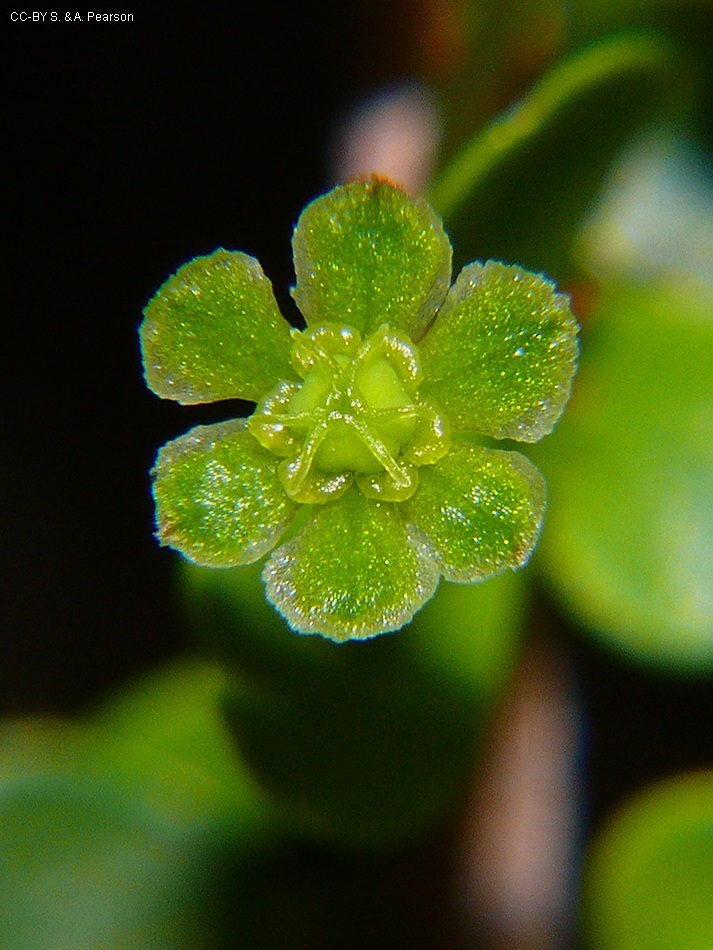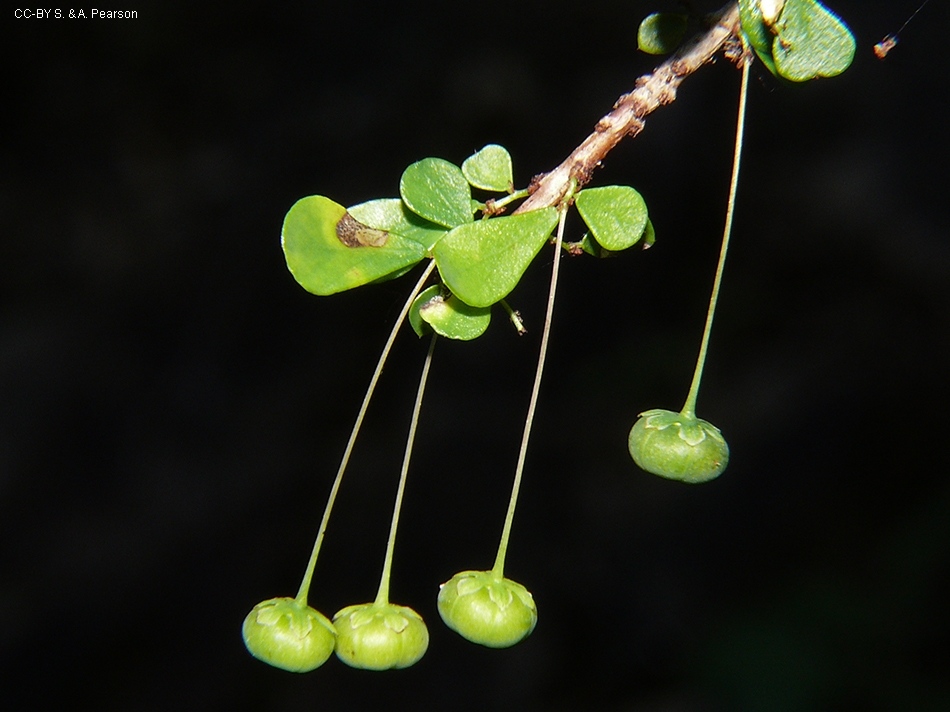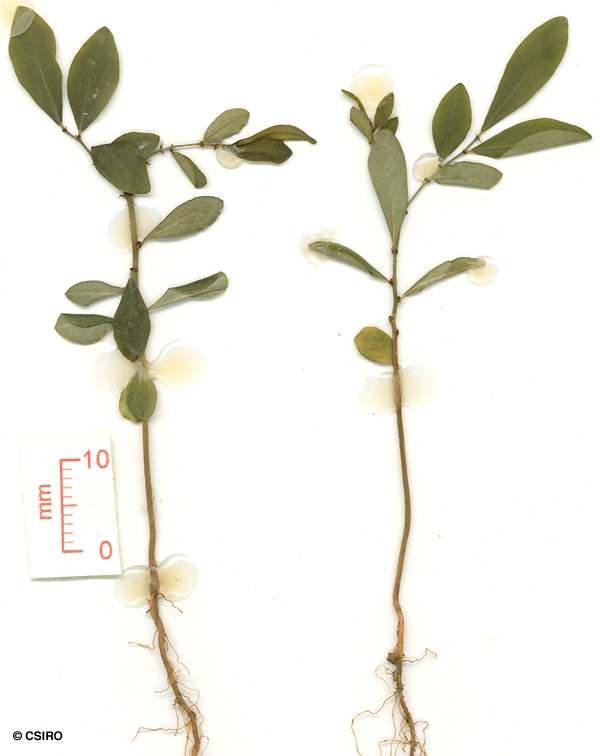Australian Tropical Rainforest Plants - Online edition
Phyllanthus microcladus Müll.Arg.








Mueller, J. von (Aargau) (1865), Linnaea: ein Journal für die Botanik in ihrem ganzen Umfange, oder Beiträge zur Pflanzenkunde 34: 71. Type: "Nova Hollandia" [see under varieties].
Shrub to 2 m tall, stems soon becoming hairless.
Leaves simple, alternate, often in clusters of 2-5 on short lateral shoots, lateral branches subtended by scale leaves, c. 2 mm long. Stipules 2, free, ovate, 0.6-1.5 mm long, red-brown. Petiole c. 1 mm long. Leaf blades obovate to oblanceolate or cuneate, (0.4-) 2-9 (-22) mm long, (0.2-) 2-5 (-11) mm wide, base cuneate to rounded, margin entire and thickened but not rolled under, apex rounded to subacute. Lateral veins about 3-5 pairs. Both surfaces hairless, lower surface ± glaucous, midrib prominent.
Inflorescence axillary, flowers solitary or in few flowered clusters or fascicles. Flowers unisexual and plants monoecious or rarely dioecious, actinomorphic, 3-merous, up to 4 mm diameter. Male pedicels 5-10 mm long; female pedicels 10-20 mm long. Tepals 6 in 2 whorls and usually yellowish or green. Male flowers: tepals c. 1.5 mm long, 6 gland-like structures alternating with the tepals, with 3 stamens, free; female flowers: tepals c. 2 mm long, glandular disk present (6 lobed), with a 3-locular superior ovary, styles 3 and each deeply bifid.
Seed germination time 16 days. Cotyledons about 5-6 x 4 mm. First pair of leaves stipulate, stipules broadly triangular. At the tenth leaf stage: stem clothed in very short, fleshy multi-headed hairs arranged in parallel lines. Stipules triangular, about 1 mm long. Leaf blade underside much paler than the upper surface.
Occurs in scattered locations in NEQ and CEQ, and southwards as far as north-eastern New South Wales. Altitudinal range in NEQ from near sea level to 450 m. Usually grows in rocky places along creeks and river banks, often as a rheophyte on streams flowing through rain forest or monsoon forest.
This profile information and associated coding has been adapted from Harden et al. (2014), Airy Shaw (1980a) and Webster (2014).





